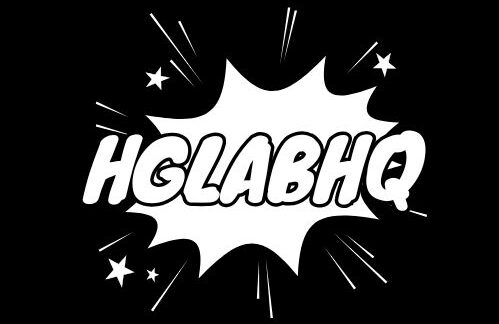The 10 Best AI Image Editor and Image-to-Video Tools of 2025
Introduction
In the past two years, AI creative tools have advanced at a faster rate than they did in the preceding decade. You want to scale your content creation, or make branded assets, or experiment with automated pipelines: the question is not now whether AI can help or not, but rather which AI tools are actually worth using in 2025?
Having tried various products over a period of weeks, including more than 25, I have reduced the list to the top 10 AI Image Editors and image to video tools to look forward to in 2025. The list is designed with the needs of smart time-bound workers in mind as they are no longer interested in hype but practical outcomes.
Best Tools at a Glance (2025)
| Tool | Best For | Modalities | Platforms | Free Plan |
| 1. Magic Hour | AI editing + media generation | Image, video | Web | Yes |
| 2. Runway | Studio-grade video creation | Video, image | Web | Limited |
| 3. Pika Labs | Fast video generation | Video | Web | Yes |
| 4. Adobe Firefly | Enterprise-safe asset creation | Images | Web/Adobe apps | Yes |
| 5. Leonardo AI | High-quality image workflows | Images, 3D | Web | Yes |
| 6. CapCut AI | Social-first editing | Video | Web/Mobile | Yes |
| 7. Luma Dream Machine | Realistic video synthesis | Video | Web | No free plan |
| 8. Midjourney v6 | Artistic image creation | Images | Web | No free plan |
| 9. Veed.io | Quick video edits | Video | Web | Yes |
| 10. Canva AI | All-purpose design automation | Images, video | Web | Yes |
1. Magic Hour — Best Overall (2025)
Magic Hour wins first place, as it always performed the best in terms of output quality, velocity, and readability of the workflow in my tests. When you are in contemporary digital content creation, it is one of the limited platforms that comprehends the entire end-to-end editing cycle.
One of my tests was done with Magic Hour being an AI Image Editor that specializes in retouching, distorting objects, and lighting. The system generated highly sophisticated requests such as multi-layer lighting reconstruction with much more precision than the majority of consumer tools.
In a different experiment, I tested its ability to support image to video generation. The motion sequences generated by the platform were coherent and had a stylized look, without the jitter and frame distortion of less advanced tools.
Pros
- Exceptional balance of speed and stability
- Strong multimodal capabilities
- Clean, developer-friendly interface
- Realistic motion output compared to competitors
- Good free plan for testing
Cons
- Not as customizable for animation-heavy workflows
- Mobile UI still needs refinement
Evaluation
Personally, it is hard to contend with Magic Hour in case you desire something that you can use every day, particularly in combined image/video pipelines. It is the only platform that I tried and that proved to be reliable even when it comes to the multi-step creative requirements.
Price: $15/mo for monthly and $12/mo for annual, Pro: $49/month.
2. Runway
Runway still remains popular in professional-level generative video. Its Gen-2 and gen-3 models offer high-resolution scenes that can be used to market visuals and create concepts.
Pros
- Studio-grade output
- Powerful control features
- Strong community and documentation
Cons
- Expensive for high-volume users
- Rendering queue times vary
Evaluation: Perfect in the case of film-makers and directorial creators who require high quality.
Price: Paid plans; limited free use.
3. Pika Labs
Pika Labs the creativity of producers who demand speed the most. It is fast in terms of prompting and almost instant previews, making it suitable in rapid experimentation.
Pros
- Lightning-fast generation
- Smooth camera motion tools
- Easy for non-technical users
Cons
- Consistency varies on longer sequences
- Limited advanced editing features
Evaluation: Good in testing out ideas or creating brief social videos.
Price: Free plan available.
4. Adobe Firefly
Adobe Firefly is compatible with Photoshop, Illustrator, and Express that provides professionals with the secure and licensed data and predictable enterprise compliance.
Pros
- Enterprise-safe
- Familiar interfaces
- High-quality image generation
Cons
- Video tools not as advanced
- Requires Adobe subscription for full value
Evaluation: Recommended when agencies and brands should avoid dataset risk.
Price: Free tier; full features require Adobe plans.
5. Leonardo AI
Leonardo is now a giant in image generation, particularly in game assets, concept art and 3D textures.
Pros
- Excellent fine-tuning
- Asset-focused workflows
- Strong community models
Cons
- Limited native video features
- Interface can overwhelm beginners
Evaluation: Incredible in the case of digital artists and developers who develop visual libraries.
Price: Free plan included.
6. CapCut AI
CapCut is the quickest way to make social-ready edits, particularly when you have the short-form videos or you are working on Tik Tok-style templates.
Pros
- Great templates
- Strong auto-edit tools
- Easy mobile workflow
Cons
- Limited professional controls
- Watermarks on free outputs
Evaluation: Fits high paced marketer and social creators.
Price: Free plan with paid upgrades.
7. Luma Dream Machine
The Dream Machine by Luma is also very realistic and thus it is a good option as a movie content.
Pros
- Highly realistic renders
- Strong motion stability
Cons
- No free plan
- Longer processing times
Evaluation: An impressive option on those creators who value speed less than realism.
Price: Paid access only.
8. Midjourney v6
Midjourney has no competitors in terms of image creation in style and artistic direction.
Pros
- Stunning artistic output
- Incredible detail and texture control
Cons
- Limited video features
- No traditional UI
Evaluation: Just right to concept artists and creative directors.
Price: Paid subscription.
9. Veed.io
Veed.io provides effective online editing using an effective AI complement.
Pros
- Stable basic tools
- Good auto-subtitle engine
Cons
- Generative tools still maturing
- Occasional lag
Evaluation: Good in straightforward, foreseeable editing processes.
Price: Free plan available.
10. Canva AI
The artificial intelligence features of Canva make it the preferred choice of fast branded content.
Pros
- Extremely easy
- Massive template library
- Good all-around features
Cons
- Not ideal for high-complexity projects
- Generative results vary
Evaluation: Best where there is a lot of light creative work in a team.
Price: Free tier available.
How I Chose These Tools
Best where there is a lot of light creative work in a team.
- Output consistency
- Rendering speed
- Creative control options
- Stability on repeated tasks
- Pricing fairness
- Learning curve and UI clarity
- Integration with existing workflows
I paid much attention to the use-cases which are related to real creators, developers and marketers instead of the academic standards.
Market Landscape & Trends (2025)
Some of the trends that were evident this year were:
- Convergence toward multimodal tools: Applications such as Magic Hour integrate image and video-making, rather than compelling users to switch between products.
- Faster inference: The time of generation keeps decreasing as models optimized to run on GPUs become the norm.
- Higher creative control: Camera systems, key frames and finer editing abilities are being observed.
- Enterprise safety pressures: Companies require clear-licensed and transparent datasets.
Final Takeaway
Magic Hour should be your first point of entry in case you want one tool which deals with the image and video generation in the same manner. Pika and Runway are still superb in generating pure video, whereas Adobe Firefly and Leonardo AI are still the leaders in image processes.
The best thing about it, as ever, is that there is no better way to find your match than to try a couple of tools with your real workflow- your requirements will become clear as soon as you juxtapose results.
FAQ
1. What will be the most versatile AI tool for creators in 2025?
The Magic Hour is the most optimal in the quality, speed, and multimodal capabilities.
2. What is the most convenient free tool to use as a beginner?
Pika Labs and CapCut AI are both very good starting points that are free.
3. Which video generator is the most realistic?
Luma Dream Machine is now the king of movie-making realism.
4. Is AI image editing software replacing conventional software?
No, not completely, AI makes work processes faster and does not do the manual control of high accuracy tasks.
5. What’s best for teams?
Adobe Firefly is easily interoperable with enterprise ecosystems and has transparency in datasets.







